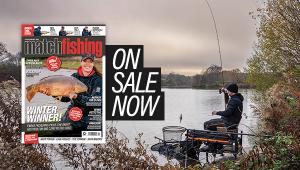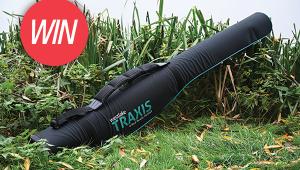Take The Negative Approach For Canal Success
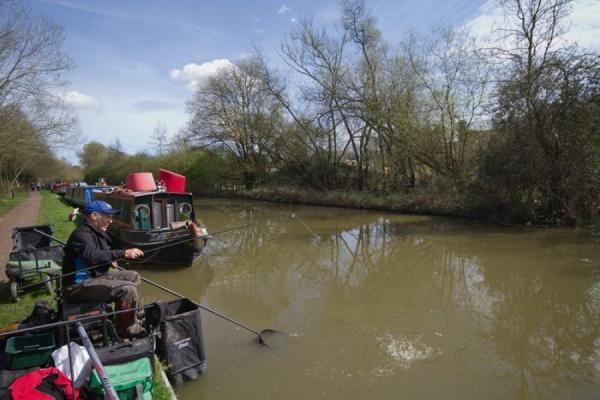
Amer Jawad gets his commercial head on to catch a weight from a busy canal.
Words and photos: Steve Martin
Late spring is the time of the year when the UK’s canals come to life, as the cold, clear cut becomes coloured once the boats venture out from their winter moorings. The increase in traffic can often dissuade some anglers from entering matches on the venues, as on some days your hook bait can spend more time out of the water than in, and the frequent wash from the boats means that you have to keep re-feeding in an effort to focus and catch the fish down the middle, and slightly up the far shelf.
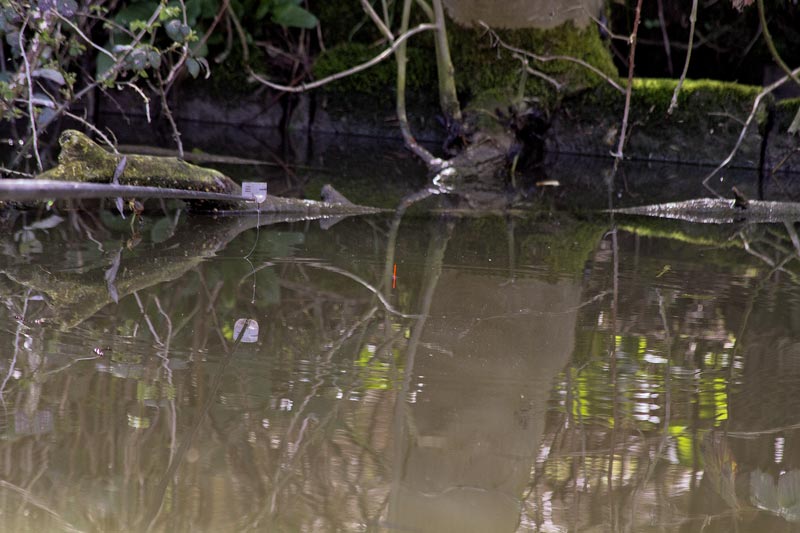
Don't fish too close to the feature, to avoid snags, and find a good depth
It all sounds rather negative, but that’s exactly Amer Jawad’s mind-set, as he has discovered a tactic to catch quality fish based on a method you would usually use on a commercial fishery.
“Once the water becomes coloured, many anglers will look to fish maggots, pinkies, and even squatts over a bed of groundbait, and that works when the boat traffic is minimal,” Amer pointed out, as he plumped up the first of his rigs for his session on the Grand Union Canal at Leighton Buzzard.
“When there are a lot of boats, especially on the weekends, fishing the channel is often a complete non-starter, but there will still be plenty of fish patrolling the far bank,” he added. “It’s just a case of getting the bait and feed right, and it’s now the time of the year when chopped worms and casters start to come into the equation.
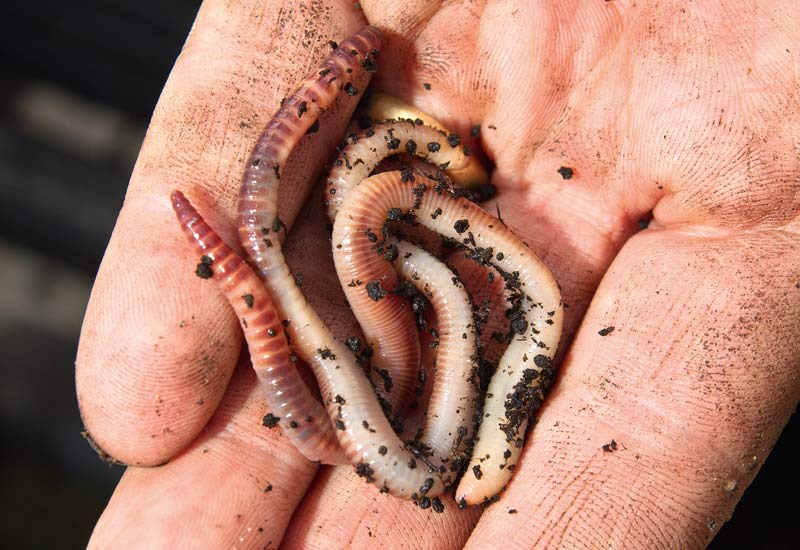
Worms are the main attractor in Amer's Toss Pot feed.
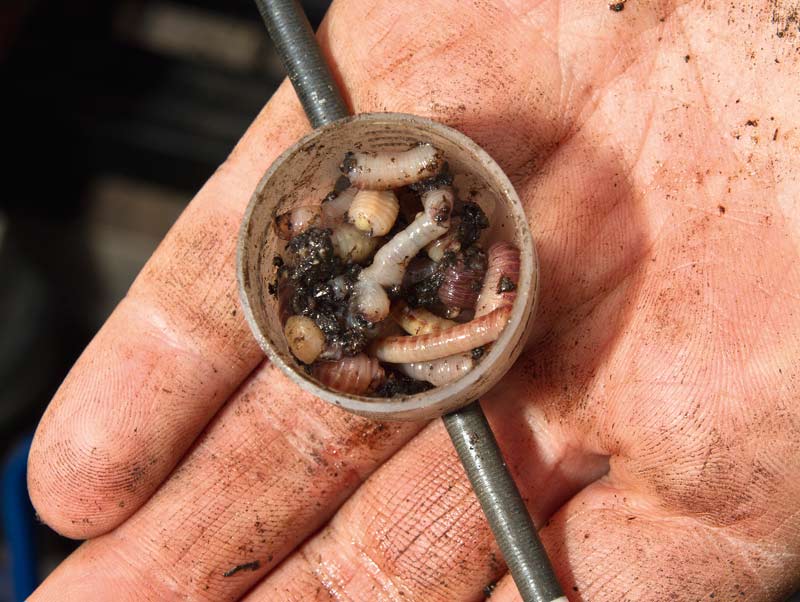
Two finely chopped dendras will give off plenty of juice
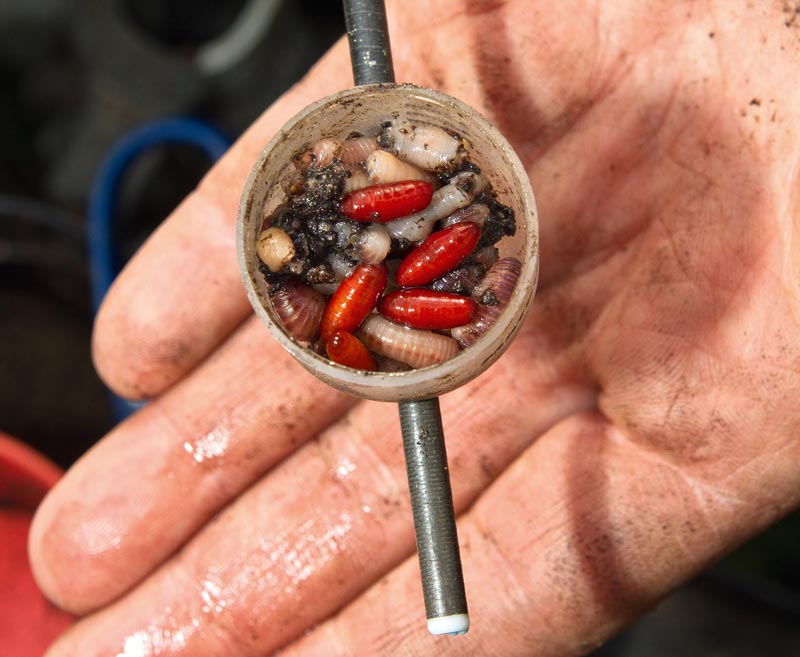
A few casters are also added - big canal fish love 'em
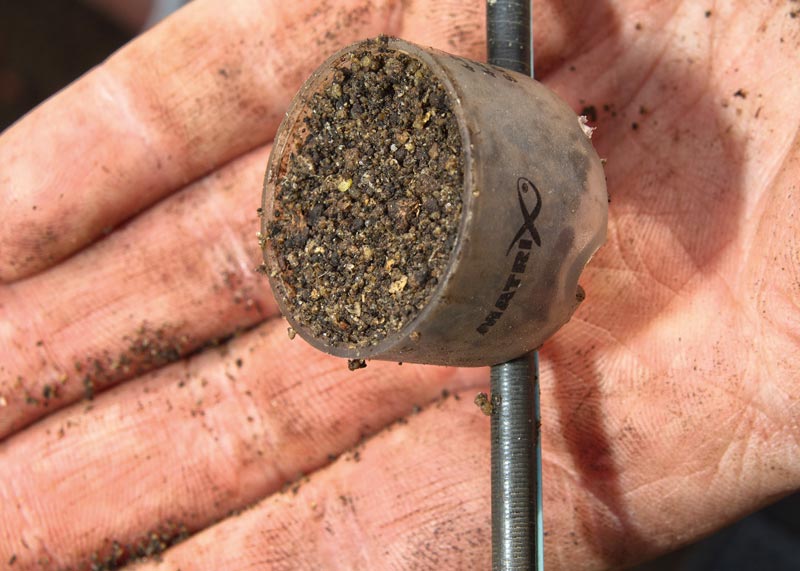
A plug of groundbait helps to create a concentrated nugget of feed
“However, those fish on the far side don’t show up in shoals, so it’s a waste of time dumping a load of feed at the start and then thinking that the fish will arrive. All you would be doing is feeding the fish off before they get close to your hook bait.
“My solution is to feed and fish for a bite, much as you would do when fishing a commercial at this time of the year. The big advantage of feeding mainly chopped worms every time is that they give off amino acids into the coloured water, which creates a flavour trail that will pull the fish towards the bait.”
Those comments about commercial tactics are backed up by the type of float Amer had set on his rig, as the 4x12 Mick Wilkinson Carbon Slim Hollow would certainly look more at home on a carp-bagging water. The float was set on 0.11mm main line, to which he had attached a 6in 0.10mm hook link with a size 16 Kamasan B560 hook. The rig was then shotted with all the bulk – six No11s, plus three No12 half-Styls – all set 10 inches above the hook. The rig was slightly undershotted to take into account the weight of the worm hook bait that Amer planned to use. With skimmers being his main target, he would fish two inches overdepth, and push the hook bait up the shelf so that it rested on or close to the feed.
“I’ve pointed out that I plan to feed for each fish, and to do this I’m going to feed with a Toss Pot from the off, loaded with two finely chopped dendrabaenas, plus three or four casters, which I will plug will a pinch of groundbait,” he continued. “I expect bites to be at a premium, and want to catch what’s there, so feeding a bigger pot would kill the line stone dead.”
Amer also pointed out, as he plumbed up his second rig – identical to the first, except the hook size was an 18 – that it’s key to explore the far-bank features, as every peg will offer a different challenge.
“Often there will be reeds or brambles, and you need to fish as close as possible to them, but to intercept the fish as they pass I suggest that you look for a little depth – about 24 inches,” he explained. “I have a tree in front of me, and there is a good depth around two feet off the bank. However, I’ll have to be mindful that there is a snag to the right – possibly roots – so I’ll have to draw the fish away to the left quickly, to avoid getting snarled up. I hope the No5 solid elastic will cope with that!”
The boat traffic had already started to increase, as Amer switched his attention to the groundbait he planned to use. It was a dark mix made up of 75 per cent World Cup Competition and 25 per cent of the Wonder Black mix from Belgium-based brand Champion Feed. This was mixed so that it was slightly overwet, as he wanted the feed to carry the worms and casters down to the deck quickly.
“The water is already bouncing due to the boats using the locks, so I need the feed to sink and settle quickly or it could be washed away from the swim, and the fish with it,” he explained. “I will only feed when the water becomes still, so I have to get it right every time.
“Ten to 12lb will be a good weight, so I would be looking to catch 1lb-plus every hour, which is why it’s key that I get the feeding right and try not to force the peg. You really need to have patience if you want to catch the bigger fish.”
To start the session, Amer nipped a 1in worm head on the hook – a bait that, he explained, stood out so that it was the only option for a fish when it moved in – and shipped out with his Toss Pot loaded with a nugget of feed, but as the canal was towing he dropped the rig in without feeding. It wasn’t until the water had almost stopped moving that he finally tipped the feed in. Soon after, the water started to pull again and Amer struggled to keep his light rig over the feed with the flow akin to a river due to the activity of the locks. However, once the water calmed down, he was able to keep the bait over the feed, and 15 minutes in he connected with a small skimmer.
He re-fed again on the next put-in, but moments later another boat appeared and it was likely that the draw on the water as it passed would have pulled the feed away, so he fed again once the flow had decreased. Again, it was a waiting game, but when Amer was able to hold the hook bait steady over the feed for a period of time, he got a bite. It was small skimmers, tiny perch and gudgeon at first – how do those small species manage to swallow a big worm head? However, about an hour in he connected with his first big fish – a bream of around 3lb. Before he shipped out again, he explained the merits of fishing with a fresh hook bait every put-in.
“Like the chopped worms that I add every time, a new worm head will leach out amino acids, which adds to its attraction,” he explained. “It’s also more lively too. An older bait becomes less attractive after a while.”
It became clear as the session progressed that Amer, would only catch a fish when he was able to keep his bait held over the feed. Any movement and the fish were not interested. His tactic of only feeding for a bite, however, was bringing rewards, as he caught three or four quality skimmers during each hour, along with small fish, so he was building quite a weight. At one point during the session, when the boat traffic had lessened, he foul-hooked a couple of fish, so as he felt there were now a few fish in the peg to he cut back on the amount he fed to one pot for every two bites unless a boat passed.
The final part of the session saw the bites drop off, and although Amer did bag two of the biggest bream of the day, there didn’t seem to be the amount of fish in the peg, as there were earlier. The boat traffic had dropped right off, and this caused him to surmise that the fish had most likely moved away. His negative approach had certainly worked when the canal was busy, as it forced the fish away from the deeper water, so he was able to ‘mug’ fish that moved close to the far bank. With fewer boats passing, fewer fish were moving to the far side, so there were less to target.
He had, however, more than doubled his estimated target as his catch of bream, skimmers and hydrids looked well over 25lb when the net was pulled out of the water, and Amer was certain that had he fished the peg in a positive way by feeding and fishing the more traditional lines, he would have struggled to catch half that weight.
Like what you see?
Or buy a single issue
- Log in or register to post comments


